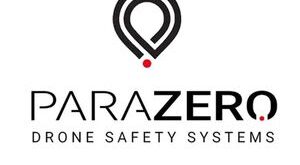Investigators are still working to discover exactly what went wrong with a Lion Air flight in Indonesia on Monday, October 29, when a Boeing 737 MAX plunged into the Java Sea, killing all 189 people onboard.
But the initial findings have highlighted a possible sensor problem, and that has been enough for Boeing to issue safety warnings to all the airlines that operate those planes, telling pilots to brush up on how to deal with confusing readings or erratic actions from the flight control computer, which could cause the planes to dive, hard. And now the FAA says it’s throwing its weight behind Boeing’s advisory, to make it mandatory for US airlines to comply.
In a statement, Boeing said, “The Indonesian National Transportation Safety Committee has indicated that Lion Air flight 610 experienced erroneous input from one of its AOA (Angle of Attack) sensors.”
An angle of attack sensor is what the plane’s computer and pilots use to figure out the amount of lift the wings are generating as they cut through the air. If the angle of attack is too steep, lift starts to decrease, eventually creating an aerodynamic stall, where there’s not enough upward lift to keep the plane aloft.
The way to counter that is to point the nose of the plane slightly downward, which safety systems will do automatically, as well as aggressively and loudly shaking the yoke control as a warning. But if the readings are incorrect or inconsistent, both the automation and the humans can be confused into pushing further and further down while they’re trying to figure out what’s going on and what to do about it, causing the sharp nose dive. The situation can escalate quickly. “These guys could have really had their hands full of airplane,” says Les Westbrooks, professor of aeronautical science at Embry-Riddle Aeronautical University and qualified pilot on the Boeing 727, an earlier Boeing commercial jet.
The Lion Air plane crashed into the sea less than half an hour after takeoff. The pilots had requested permission to return to Jakarta airport, but instead of turning the plane dived, and may have been going as fast as 600 mph when it hit the water.
Any issue with the 737 MAX is concerning because it’s proving to be a popular model around the world for Boeing, which has delivered 219 of the fourth generation of the 737 narrow-body jet plane and is sitting on orders for more than 4,700 more, making it the fastest-selling plane in Boeing’s history. It’s an upgrade to previous 737s, with more efficient engines and distinctive split wingtips for better aerodynamics. Boeing started deliveries in May 2017. The biggest customers in the US so far include Southwest and American. Internationally, Air Canada, Lion, and Norwegian all have them in their fleets, as do several Chinese regional airlines.
Boeing didn’t reply to a request for clarification on whether or not this safety warning affects just the particular model, the MAX-8, that Lion Air was flying, or if it impacts the MAX-7 through MAX-10, which are different lengths.
So far the bulletin doesn’t call for inspections or replacements of sensors or computers. Rather, to try to make sure they’re not thrown off-guard, Boeing is reiterating what flight crew are supposed to do if they do get faulty readings. As its statement says, it is “directing operators to existing flight crew procedures to address circumstances where there is erroneous input from an AOA sensor.”
They’re effectively saying “Go back, revisit your training, remind yourself what to do.” At their most basic, the correct procedures mean disregarding what the instruments and warnings are saying and resetting the plane to a stable situation. “The ultimate answer is to set a known pitch and power setting,” says Westbrooks. That should create level flight and buy pilots time to figure out which readings are real and which are malfunctions.
The investigation into the crash is ongoing and may reveal other compounding problems besides the sensor failure. But the accident also highlights the issue of overreliance on automated systems, with flight crews having minimal experience in how to deal with manual flying, let alone emergencies.
“We’ve been talking for several years in the industry about a degradation of pilot hand-flying skills,” says Westbrooks.
Airline crashes are usually a result of one or more simple failures, followed by confusion among the crew, leading to a situation that quickly spirals out of control. That’s what happened when Air France flight 447 crashed into the Atlantic on the way to Paris from Rio de Janeiro in 2009, killing 228. Airspeed sensors on the Airbus A330 iced up, causing the autopilot to disconnect. The crew tried to fly manually, but couldn’t do it well enough to level the plane.
Airlines that fly the 737 MAX, like cut-price carrier Norwegian, say they’re not grounding any planes, and aviation experts like Westbrooks continue to stress that flying is a very safe form of transport. “When I get in a plane I’m relieved I don’t have to drive,” he says, because the chances of a car crash are much higher. And what Boeing and accident investigators learn from the Lion Air crash should feed back into procedures, potentially including pilot training, that make flying safer still.
 Unmanned Aerial Vehicle The latest drone news
Unmanned Aerial Vehicle The latest drone news



